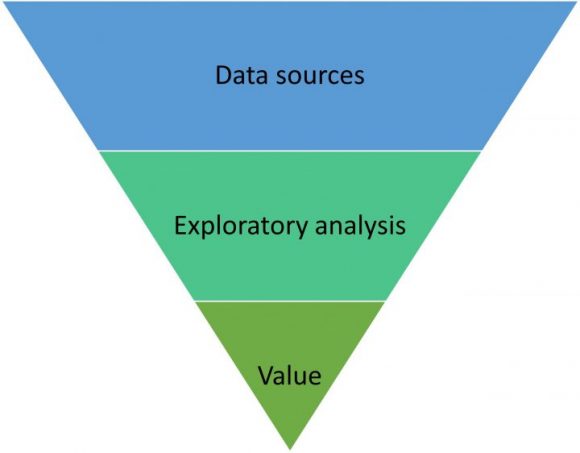The value of data can be fully realized through careful preprocessing and exploratory analyses. Achieving this requires continuous collaboration between data scientists and data owners. The process begins with understanding the data, followed by analysis and interpretation of results.
In the current blog, we focus on data pre-processing steps, specifically data wrangling. These steps are essential before data can be transformed into data-driven insights. To maximize the production value from data (Figure 1.), it’s crucial to ensure that the derived insights are actionable and aligned with business priorities.
This article is Part III of the InnoSale blog series, where we explore different perspectives on data usage and sharing within collaborative research projects. In this blog series, we have previously discussed use cases (Part I) and stakeholders, whilst the next blogs will tackle the confidentiality of the AI model (Part IV) and business benefit (Part V). Blogs are published at https://www.innosale.eu/. Please also join our webinar 29.5.2024 14:00-15:30 Finnish time (13:00-14:40 CET), registration link.


